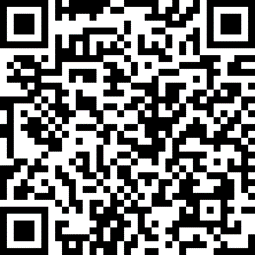案例#1
一个 8 岁的男孩在给予七氟醚后出现呼吸困难。他对留置静脉导管没有反应。他对双臂僵硬,这是在这一类诱导麻醉中常见的表现。麻醉师尝试增加通气量以达到正常的呼气末二氧化碳水平。在给予非去极化神经肌肉阻滞剂后,进行了气管插管,此时呼出的二氧化碳分压是>65mmHg。进行 4 个成串刺激尺神经(一种用电刺激神经后相应的反应来评估神经肌肉组织程度的方法)无反应。血气分析提示混合型酸中毒,血钾 5mmol/L,乳酸 3mmol/L。
案例#2
一位 68 岁的男患者正在接受腹腔镜手术。在异氟烷麻醉的第 3 个小时时,外科医生发现患者的腹部僵硬。麻醉师给予了非去极化神经肌肉阻滞剂,而后进行的运动神经刺激发现没有运动。之后静脉给予鈣受体阻滞剂也不能使心率降至 80 次/分以下。双倍的分钟通气量也无法维持呼气末二氧化碳分压在 45mmHg 以下。当患者食管温度上升到 37℃(98.6℉)时,关闭了加热装置,但是体温持续上升。吸入麻醉停止。
其他表现
MH 的临床表现常没有肌肉强直或代谢性酸中毒,在这些迹象出现之前进行治疗可能终止 MH 的发生且没有并发症。但 MH 也可能发生在麻醉后恢复期。[3]Litman RS, Flood CD, Kaplan RF, et al. Postoperative malignant hyperthermia: an analysis of cases from the North American Malignant Hyperthermia Registry. Anesthesiology. 2008;109:825-829.http://www.ncbi.nlm.nih.gov/pubmed/18946294?tool=bestpractice.com这一类 MH 的体征和实验室数据与那些发生在吸入麻醉过程中的 MH 相类似,但此时记录自主呼吸患者的分钟通气量可能更困难。MH 也可以表现为没有代谢改变的横纹肌溶解。这在接受琥珀胆碱麻醉而没有暴露于强效吸入麻醉药的患者和一些接受短时间吸入麻醉的患者中也观察到过。[4]Riazi S, Larach MG, Hu C, et al. Malignant hyperthermia in Canada: characteristics of index anesthetics in 129 malignant hyperthermia susceptible probands. Anesth Analg. 2014;118:381-387.http://www.ncbi.nlm.nih.gov/pubmed/23842196?tool=bestpractice.comMH 也可能发生于全身麻醉期间,但没有暴露于强效吸入麻醉药和琥珀酰胆碱等触发因素。[5]Larach MG, Gronert GA, Allen GC, et al. Clinical presentation, treatment, and complications of malignant hyperthermia in North America from 1987 to 2006. Anesth Analg. 2010;110:498-507.http://journals.lww.com/anesthesia-analgesia/pages/articleviewer.aspx?year=2010&issue=02000&article=00039&type=Fulltexthttp://www.ncbi.nlm.nih.gov/pubmed/20081135?tool=bestpractice.com在麻醉以外的情况下 MH 很少发生。[2]Sagui E, Montigon C, Abriat A, et al. Is there a link between exertional heat stroke and susceptibility to malignant hyperthermia? PLoS One. 2015;10:e0135496.http://www.ncbi.nlm.nih.gov/pmc/articles/PMC4530942/http://www.ncbi.nlm.nih.gov/pubmed/26258863?tool=bestpractice.com[6]Rosenberg H, Pollock N, Schiemann A, et al. Malignant hyperthermia: a review. Orphanet J Rare Dis. 2015;10:93.http://ojrd.biomedcentral.com/articles/10.1186/s13023-015-0310-1http://www.ncbi.nlm.nih.gov/pubmed/26238698?tool=bestpractice.com对于其中大多数病例,或者存在剧烈体育运动、[7]Tobin JR, Jason DR, Challa VR, et al. Malignant hyperthermia and apparent heat stroke. JAMA. 2001;286:168-169.http://www.ncbi.nlm.nih.gov/pubmed/11448278?tool=bestpractice.com[8]Lavezzi WA, Capacchione JF, Muldoon SM, et al. Case report: death in the emergency department: an unrecognized awake malignant hyperthermia-like reaction in a six-year-old. Anesth Analg. 2013;116:420-423.http://www.ncbi.nlm.nih.gov/pubmed/23267001?tool=bestpractice.com[9]Parness J. Hot on the trail of "I know it when I see it!". Anesth Analg. 2014;118;243-246.http://www.ncbi.nlm.nih.gov/pubmed/24445622?tool=bestpractice.com运动导致的横纹肌溶解症、[10]Davis M, Brown R, Dickson A, et al. Malignant hyperthermia associated with exercise-induced rhabdomyolysis or congenital abnormalities and a novel RYR1 mutation in New Zealand and Australian pedigrees. Br J Anaesth. 2002;88:508-515.http://bja.oxfordjournals.org/content/88/4/508.fullhttp://www.ncbi.nlm.nih.gov/pubmed/12066726?tool=bestpractice.com[11]Groom L, Muldoon SM, Tang ZZ, et al. Identical de novo mutation in the type 1 ryanodine receptor gene associated with fatal, stress-induced malignant hyperthermia in two unrelated families. Anesthesiology. 2011;115:938-945.http://www.ncbi.nlm.nih.gov/pubmed/21918424?tool=bestpractice.com发热疾病、[12]Brown RL, Pollock AN, Couchman KG, et al. A novel ryanodine receptor mutation and genotype-phenotype correlation in a large malignant hyperthermia New Zealand Maori pedigree. Hum Mol Genet. 2000;9:1515-1524.http://hmg.oxfordjournals.org/content/9/10/1515.fullhttp://www.ncbi.nlm.nih.gov/pubmed/10888602?tool=bestpractice.com或者存在致命性 MH 发生前反复发作的热相关疾病。[12]Brown RL, Pollock AN, Couchman KG, et al. A novel ryanodine receptor mutation and genotype-phenotype correlation in a large malignant hyperthermia New Zealand Maori pedigree. Hum Mol Genet. 2000;9:1515-1524.http://hmg.oxfordjournals.org/content/9/10/1515.fullhttp://www.ncbi.nlm.nih.gov/pubmed/10888602?tool=bestpractice.com[13]Brandom BW, Muldoon SM. Unexpected MH deaths without exposure to inhalation anesthetics in pediatric patients. Paediatr Anaesth. 2013;23:851-854.http://www.ncbi.nlm.nih.gov/pubmed/23848295?tool=bestpractice.com已知 MH 也会发生于婴儿。[14]Chamley D, Pollock NA, Stowell KM, et al. Malignant hyperthermia in infancy and identification of novel RYR1 mutation. Br J Anaesth. 2000;84:500-504.http://bja.oxfordjournals.org/content/84/4/500.full.pdf+htmlhttp://www.ncbi.nlm.nih.gov/pubmed/10823104?tool=bestpractice.com

